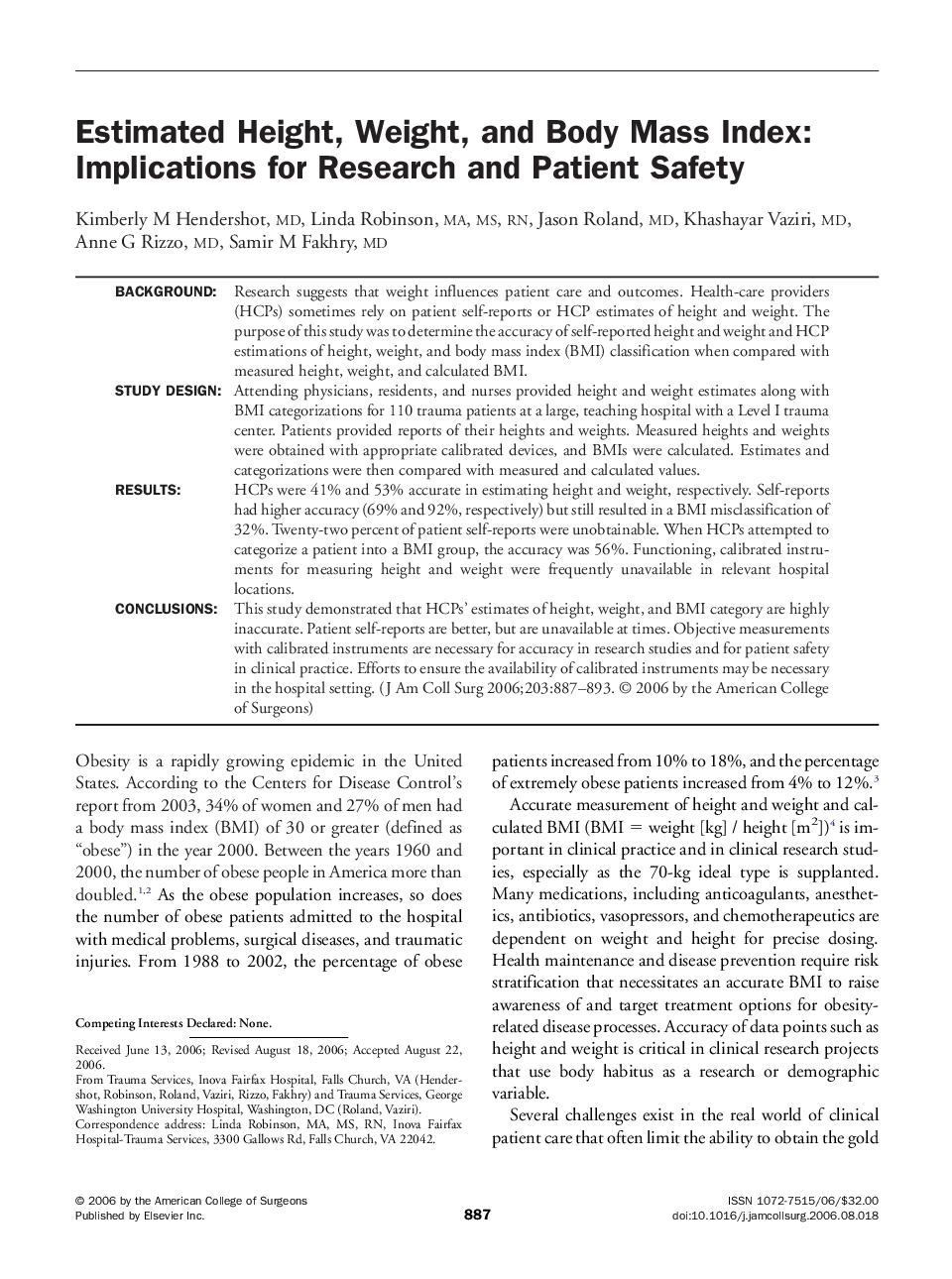| Article ID | Journal | Published Year | Pages | File Type |
|---|---|---|---|---|
| 4295917 | Journal of the American College of Surgeons | 2006 | 7 Pages |
BackgroundResearch suggests that weight influences patient care and outcomes. Health-care providers (HCPs) sometimes rely on patient self-reports or HCP estimates of height and weight. The purpose of this study was to determine the accuracy of self-reported height and weight and HCP estimations of height, weight, and body mass index (BMI) classification when compared with measured height, weight, and calculated BMI.Study designAttending physicians, residents, and nurses provided height and weight estimates along with BMI categorizations for 110 trauma patients at a large, teaching hospital with a Level I trauma center. Patients provided reports of their heights and weights. Measured heights and weights were obtained with appropriate calibrated devices, and BMIs were calculated. Estimates and categorizations were then compared with measured and calculated values.ResultsHCPs were 41% and 53% accurate in estimating height and weight, respectively. Self-reports had higher accuracy (69% and 92%, respectively) but still resulted in a BMI misclassification of 32%. Twenty-two percent of patient self-reports were unobtainable. When HCPs attempted to categorize a patient into a BMI group, the accuracy was 56%. Functioning, calibrated instruments for measuring height and weight were frequently unavailable in relevant hospital locations.ConclusionsThis study demonstrated that HCPs’ estimates of height, weight, and BMI category are highly inaccurate. Patient self-reports are better, but are unavailable at times. Objective measurements with calibrated instruments are necessary for accuracy in research studies and for patient safety in clinical practice. Efforts to ensure the availability of calibrated instruments may be necessary in the hospital setting.
